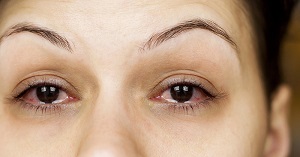
What is Watery Eye?
A watery eye or epiphora is generally seen in young babies and older people. In this condition, tears accumulate in the eyes due to a blockage in one or both tear ducts. As a result, excessive tears trickle down the face instead of draining from the tear ducts.
The delicate balance between tear production and loss is maintained by the lacrimal system present in the eye. However, sometimes this balance is disrupted and the eye becomes prone to irritants that include:
- Infections
- Injury
- Allergic inflammations
- Dirt or a piece of grit
- Inwardly growing eyelashes
The eyes secrete excess tears as a protective mechanism to steer away from these irritants.
A normal eye is kept moist by a definite amount of tears. Extra tears, if any, pass on to the tear duct and nose. The tear duct may be blocked due to the narrowing of its upper part over time. In such cases, the excess tears trickle down the cheeks.
Treatment for Epiphora (watery eyes)
Dacryocystorhinostomy (External and Transcanalicular Laser)
Dacryocystorhinostomy is a procedure to treat watery and sticky eyes caused by narrowing or blockage of the tear drainage tubes. Depending on your condition, dacryocystorhinostomy may be performed externally (through the skin) or endoscopically using a Transcanalicular laser.
- External Dacryocystorhinostomy: During this procedure, a nick is made on the side of your nose to access the tear sac. A small piece of bone is removed from between the tear sac and the nose to access the inside of the nose.
- Transcanalicular Laser: Transcanalicular laser dacryocystorhinostomy is a minimally invasive endoscopic procedure to treat epiphora. During this procedure, a fiber-optic light probe is inserted through the nasal cavity to the lacrimal sac (tear sac).
Probing & Syringing +/- Intubation
Probing and syringing are performed to open up blocked tear ducts. It can be performed under local or general anesthesia as an outpatient procedure. During this procedure, a thin flexible probe (wire) is inserted down the tear duct to clear any blockage.
Lacrimal Stents
Lacrimal stenting can be performed as an outpatient procedure under moderate sedation. Lacrimal stents are thin tubes that are implanted in patients with narrowed but not completely blocked tear ducts. They help keep the tear duct open and help prevent further scarring.

